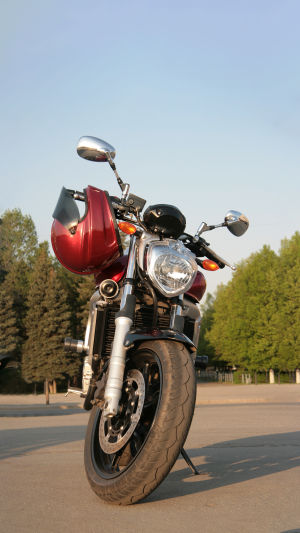Motorcycles, driven by internal combustion engines and steered by handlebars controlling the front wheel, are two-wheeled or three-wheeled vehicles known for their lightweight, agility, and swift maneuverability.
Widely used for patrolling, and transporting passengers and goods, they also serve as sporting equipment.
Since the invention and manufacturing of the world's first gasoline-powered motorcycle by Gottlieb Daimler of Germany in 1885, motorcycles have undergone significant development over more than a century.
The original motorcycle, whose true shape is now in the Museum of Science and Technology in Munich, Germany, is the world's first motorcycle invented and patented by German Daimler on August 29, 1885.
More than 100 years ago, the gasoline engine and vehicle manufacturing were still in a rudimentary state. There was a significant difference in appearance, structure, and performance between the original motorcycles and modern motorcycles.
The frame of the original motorcycle was made of wood, crafted by carpenters. Its wheels were also wooden, covered with iron sheeting on the outside. Underneath the frame, there were several square wooden frames where the engine was placed. Two small support wheels were attached to each side of the wooden frames to prevent tipping when stationary, effectively making the vehicle a quadricycle.
The single-cylinder, fan-cooled engine delivered power through a belt and gear two-stage reduction drive to propel the rear wheel. The seat was saddle-shaped and covered with leather. The engine had a working volume of 264mL, with a maximum power of 0.37kW (at 700r/min), only one-fifth of that of modern lightweight motorcycles. Its top speed was 12km/h, barely faster than walking.
Lacking suspension, this motorcycle was notoriously uncomfortable, earning it the nickname "bone-shaker." Traveling on 19th-century cobblestone streets would have been an ordeal. Despite its rudimentary nature, this motorcycle marked the beginning of continuous innovation and improvement that led to the modern motorcycles we see today.
Another prominent example in motorcycle history is the American motorcycle, with Harley-Davidson being a notable company. In 1903, Harley-Davidson produced its first commercially available motorcycle, known as Model 1, with a working volume of 409mL and a power of 2.94kW, utilizing a bicycle frame. Motorcycles are products of their time, embodying the technological advancements of their respective eras.
The reason why the original motorcycle could not be used is that the science and technology at that time could not meet the most basic parts required for its normal operation, so it could only be placed in the laboratory.
From the late 1890s to the early 20th century, early motorcycles began to gain practical value and entered mass production as commodities, thanks to new inventions and technologies of the time, such as pneumatic tires, ball bearings, clutches, and gearboxes, front suspension systems, and spring seats.
After the 1930s, with continuous advancements in science and technology, motorcycles incorporated rear suspension systems, mechanical ignition systems, drum brakes, and chain drives, and reached new heights, gradually maturing and finding wide applications in transportation and competitions. By 1936, Harley-Davidson in the United States had developed significantly advanced motorcycles.
The development of motorcycles resembles ascending steps, with each stage bringing higher sophistication.
Since the 1970s, motorcycles have integrated electronic ignition technology, electric starters, disc brakes, streamlined bodywork, and, in the 1990s, emission control technology, and ABS anti-lock braking systems, making them advanced, aesthetically pleasing, high-performing vehicles.
Particularly, high-displacement luxury motorcycles have transplanted advanced automotive technologies onto motorcycles, achieving remarkable levels of refinement.
In the future, with continuous technological advancements, motorcycles will undoubtedly continue to innovate, bringing more surprises and conveniences to our lives and future.





